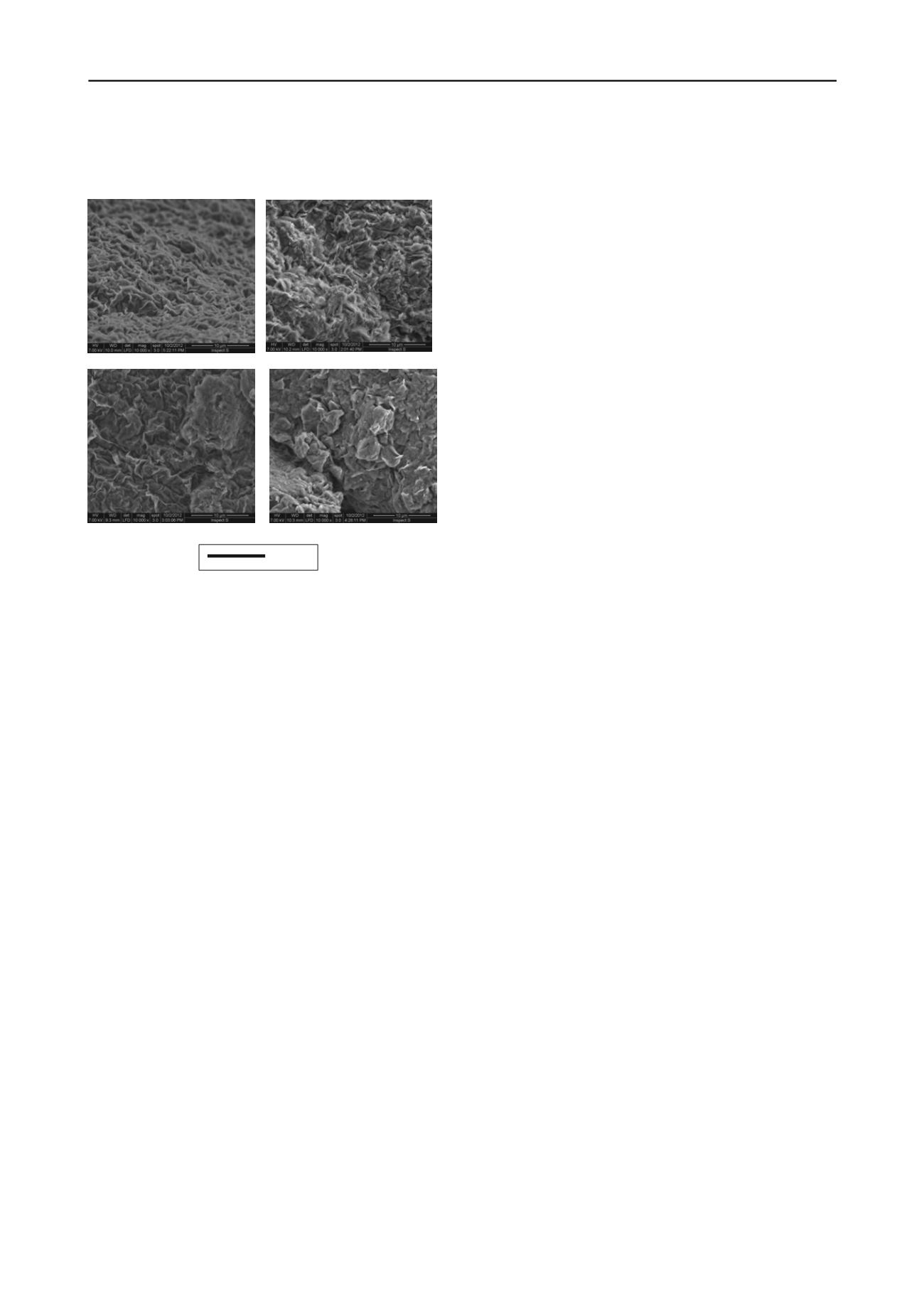
3028
Proceedings of the 18
th
International Conference on Soil Mechanics and Geotechnical Engineering, Paris 2013
specimens that underwent cycles with tap water. Ultimate
shrinkage of the GCLs had occurred by the end of the 20 wet-
dry cycles as presented in Olsen et al. (2012).
5
ACKNOWLEDGEMENTS
This study was partially supported by the Global Waste
Research Institute and the South Central Solid Waste Authority.
CETCO provided testing materials. Mr. Chris Athanassopoulos
provided technical information.
REFERENCES
Beddoe R.A., Take W.A., and Rowe, R.K. 2011. Water retention
behavior of geosynthetic clay liners, Journal of Geotechnical and
Geoenvironmental Engineering, 137(11), 1028-1038.
Egloffstein T.A. 2001. Natural bentonites—influence of the ion
exchange and partial desiccation on permeability and self-healing
capacity of bentonites used in GCLs. Geotextiles and
Geomembranes, 19, 427-444.
a) 1 cycle (fully dispersed)
b) 10 cycles
Fredlund D.G. and Xing A. 1994. Equations for the soil-water
characteristic curve. Canadian Geotechnical Journal, 31(4), 533-
546.
Fredlund D.G., Rahardjo H., and Fredlund M.D. 2012. Unsaturated soil
mechanics in engineering practice. Wiley, Hoboken, New Jersey.
Meer S.R. and Benson C.H. 2007. Hydraulic conductivity of
geosynthetic clay liners exhumed from landfill final covers. Journal
of Geotechnical and Geoenvironmental Engineering, 133(5), 550-
563.
National Research Council – NRC. 2007. Assessment of the
performance of engineered waste containment barriers. The
National Academies Press, Washington DC.
c) 20 cycles (DI water)
d) 20 cycles (tap water)
10
m
Olsen G.R. 2011. Dimensional stability of geosynthetic clay liners in
landfill applications, M.S. Thesis, Cal Poly, San Luis Obispo,
California,
/.
Figure 6. SEM images of bentonite from GCL specimens
Both macroscale and microscale effects observed due to
wetting and drying may have promoted presence of larger voids
and therefore lower values of suction for a given moisture
content. The lower suction may have forced the drying curve
closer to the wetting curve reducing the extent of hysteresis as
observed in the test program for the cycled specimens.
Olsen G.R., Yesiller, N., and Hanson, J.L. 2012. Dimensional stability
of geosynthetic clay liners under varying hydration conditions.
Proceedings, GeoAmericas 2012, 2nd Pan-American Congress on
Geosynthetics, Lima, Peru, May 1-4, 2012.
Pham H.Q. and Fredlund D.G. 2008. Equations for the entire soil-water
characteristic curve of a volume change soil. Canadian
Geotechnical Journal, 45(4), 443-453.
Scalia J. and Benson C.H. 2011. Hydraulic conductivity of geosynthetic
clay liners exhumed from landfill final covers with composite
barriers. Journal of Geotechnical and Geoenvironmental
Engineering 137(1), 1-13.
4
CONCLUSION
A laboratory investigation was conducted to determine the
moisture-suction relationships for GCLs under as-received
conditions (moisture contents in the range of 14-27%) and
subsequent to wet-dry cycles (20 cycles at 50% moisture
content). The moisture-suction relationships were developed
using combined pressure plate, filter paper, and relative
humidity methods over a wide range of suction. Tests were
conducted on three types of common GCLs (two conventional
GCLs and one multi-component GCL) that contained granular
bentonite and were bonded with needlepunching. Differences
were observed between the conventional and multi-component
GCLs and between the as-received and wet-dry cycled GCLs.
The air entry suction value for the multi-component GCL was
lower than that for the conventional GCLs for the drying
branches of the moisture suction curves and higher for the
wetting branches of the curves. The residual suction value for
the multi-component GCL was higher than the residual suction
values for the other two GCLs. The extent of hysteresis
decreased and the differences between drying and wetting
curves reduced for the wet-dry cycled specimens compared to
the as-received specimens. Macro- and microstructural
variations determined through grain size distribution and SEM
analyses indicated increasing void sizes and nonuniformity in
fabric due to wet-dry cycling, supporting the observations for
variations in moisture-suction response. The moisture-suction
data and model parameters obtained in the test program can be
adapted for use for similar GCLs.


